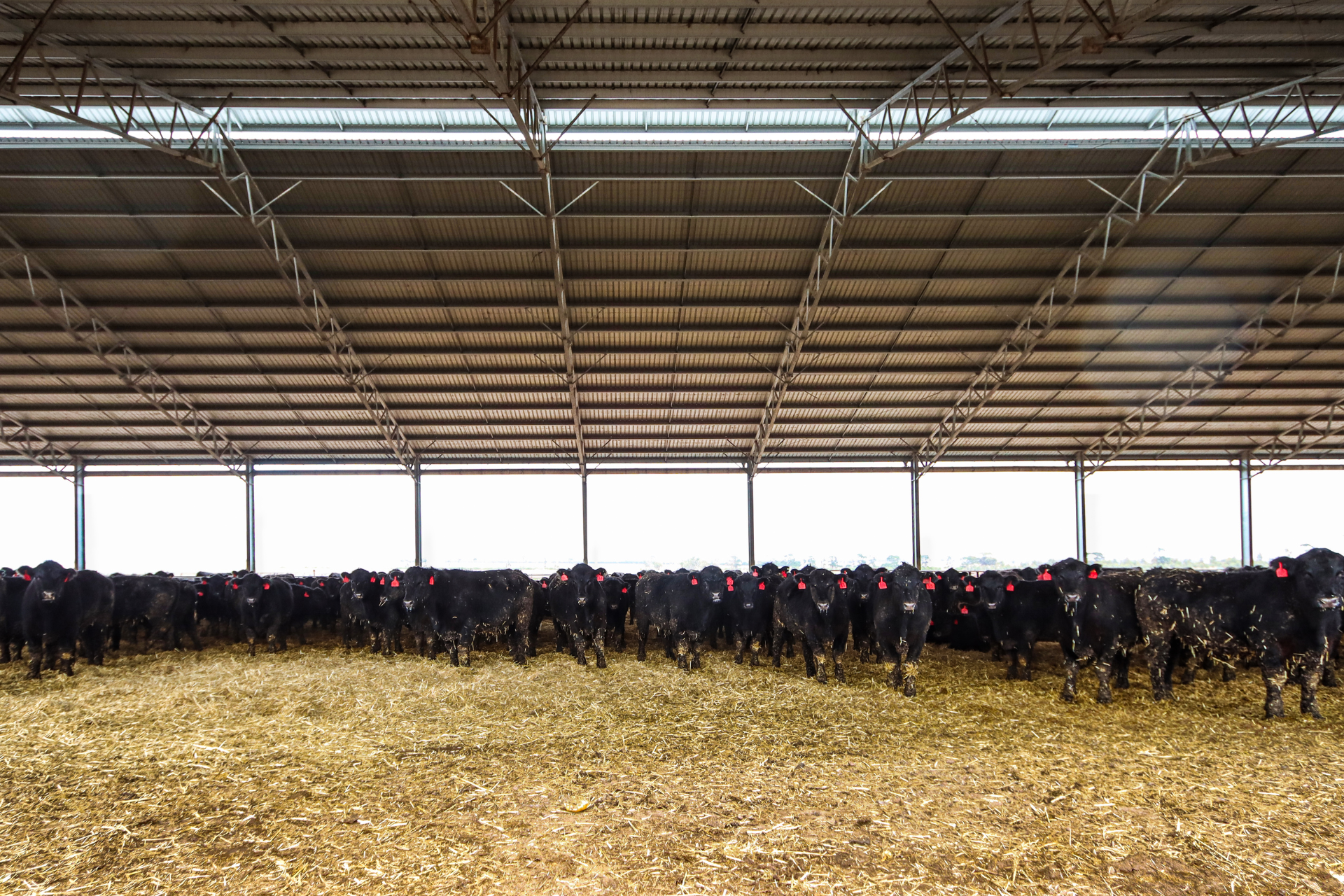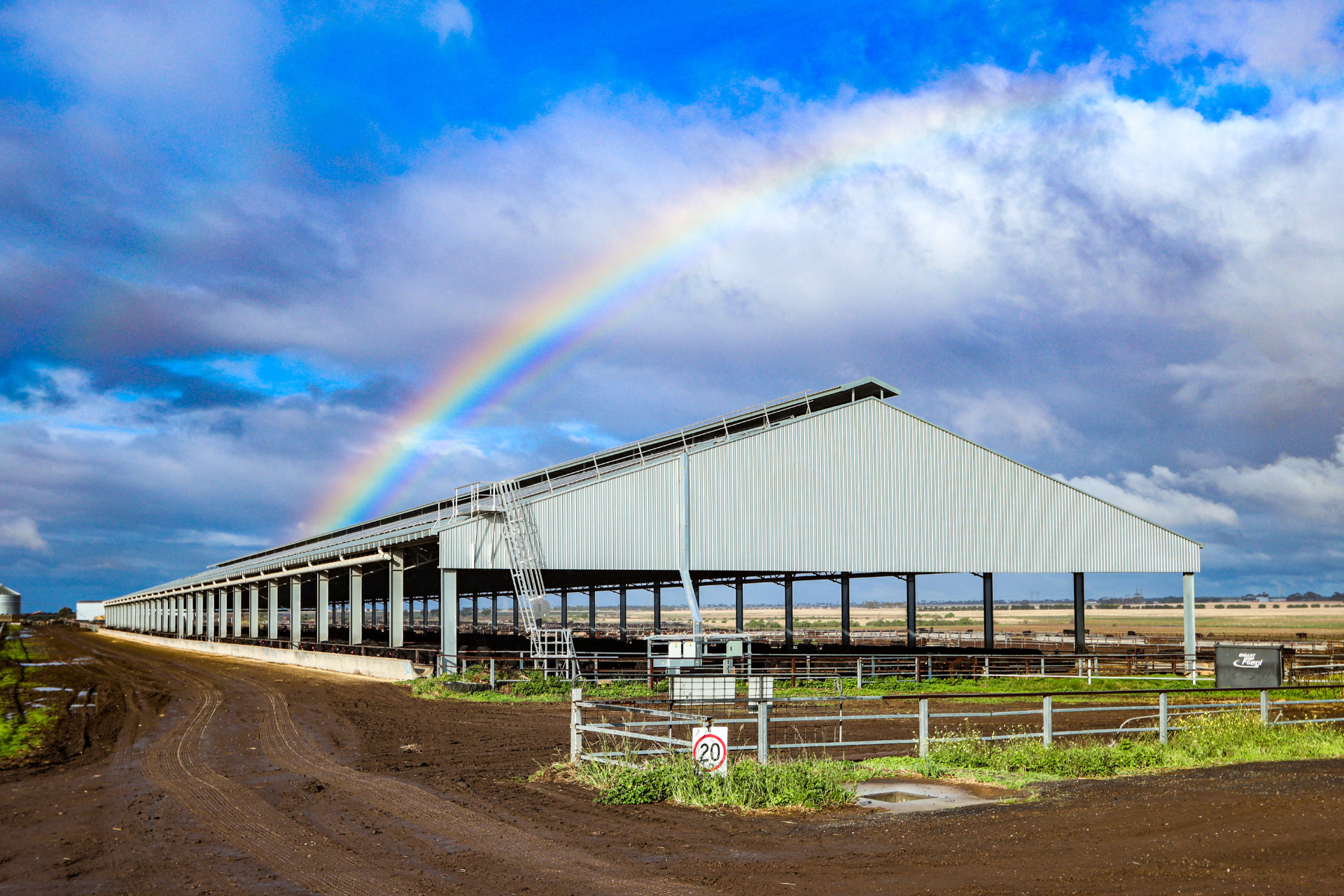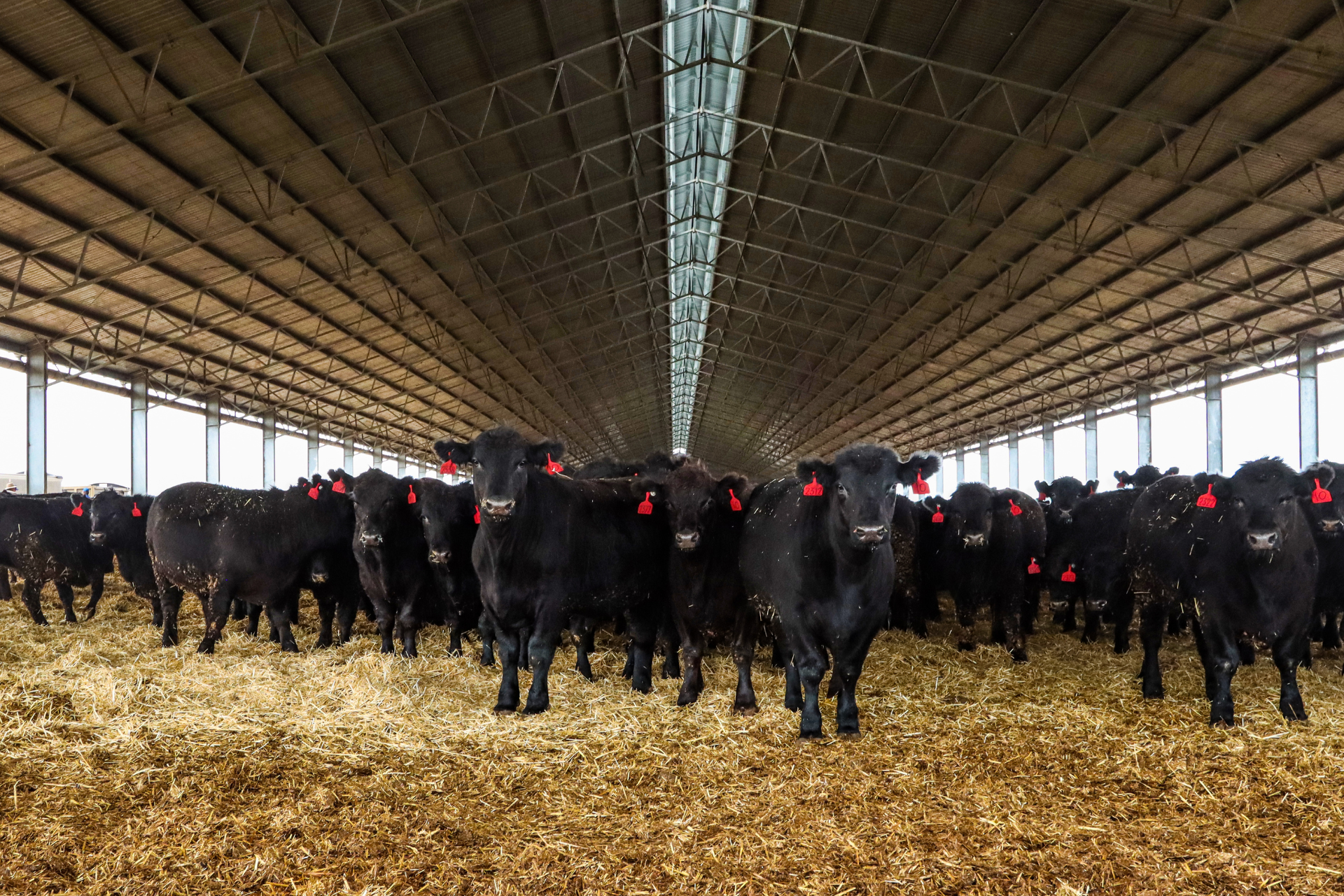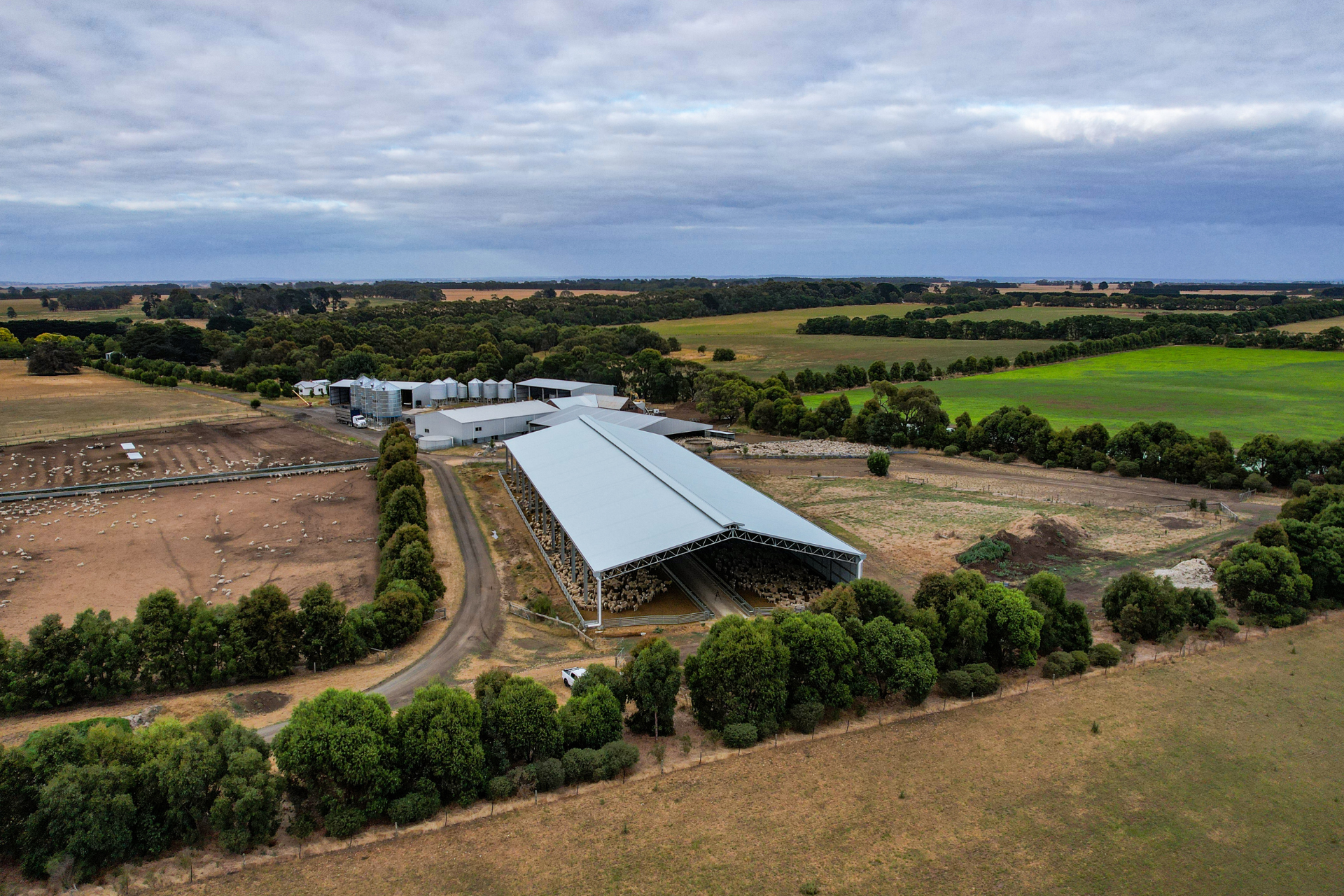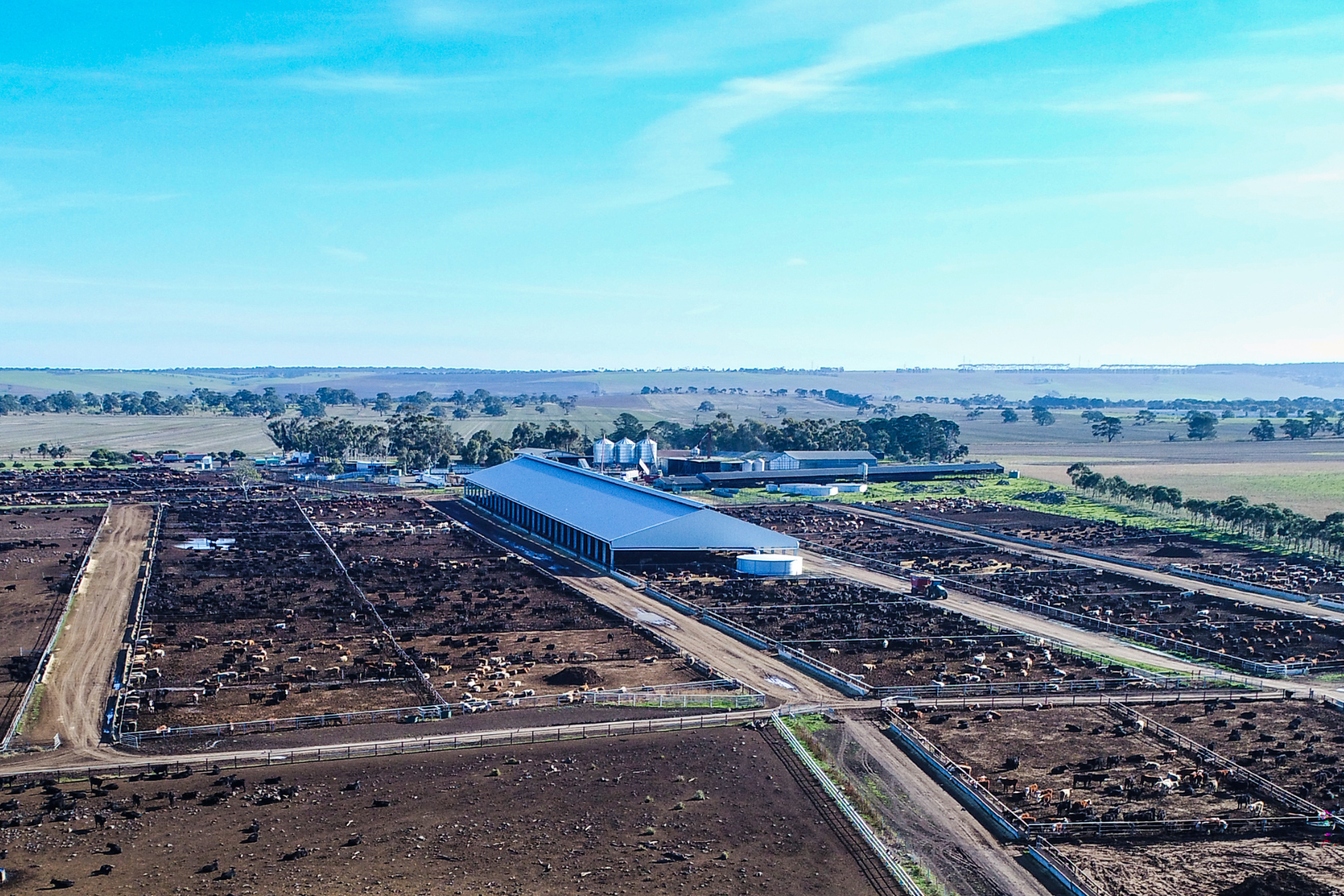What are the benefits of feedlot sheds?
Why implement a covered housing system?
A feedlot’s unique operational requirements and objectives will largely determine the best-fit shade system.
For example, installing shade cloth is a straightforward and relatively low-cost way to meet the ALFA shade requirements. This also provides the cattle with the choice to seek out shade.
Another shade option for feedlots to consider is a structural steel partial shade set-up. This provides all the benefits of shade cloth and more – including increased longevity and the ability to capture stormwater run-off.
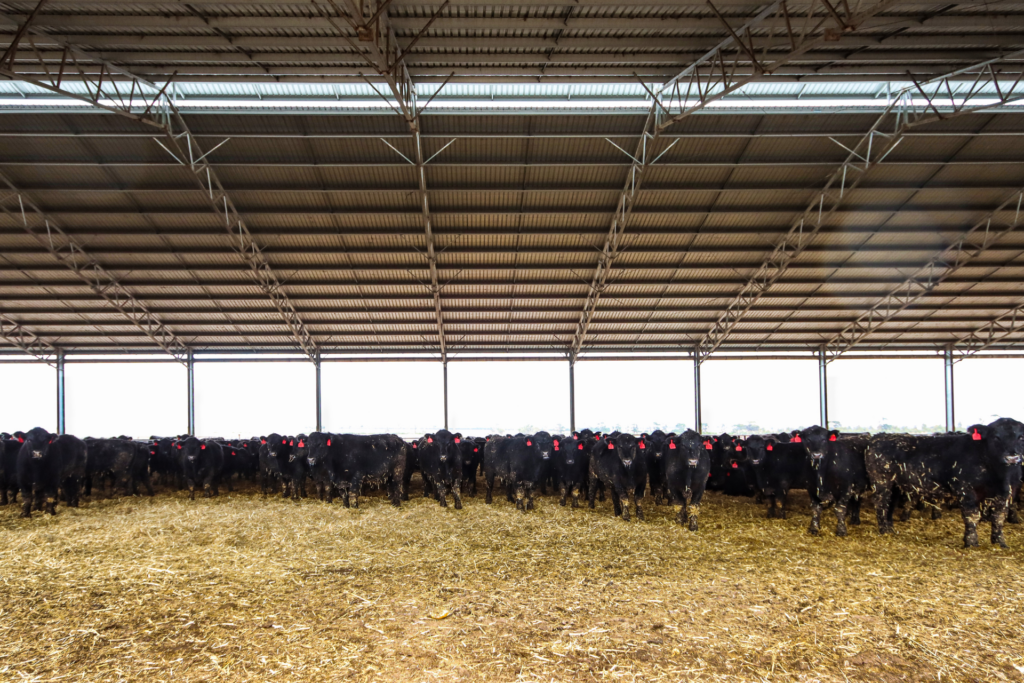
Thirdly, there is the option of feedlot sheds as part of a covered housing system – a similar concept to some dairy barns.
There is a significant case for implementing covered housing systems, particularly when it comes to longer term objectives like return on investment and sustainability.
While each shade systems have their own advantages, let’s discuss some of the benefits of feedlot sheds.
We have also included some useful resources and price guides to help you weigh up the benefits.
8 Benefits Of Feedlot Sheds
Here’s an overview of eight key benefits of feedlot sheds to keep in mind when planning your feedlot shade implementation.
1. Increased Average Daily Weight Gains & Quicker Finishing
Feedlots who have implemented covered housing systems have reported some impressive cattle weight gains.
One of these is Jalna Feedlot – David & Katy installed the feedlot shed in 2017 to take advantage of these benefits.
“By coming into the shed, we’re seeing 0.2 to 0.3 kilograms better weight gains per day.” -David Gillett
These weight gains help reach target weights faster, shortening the length of the finishing period and allowing more cattle to be turned off in a year.
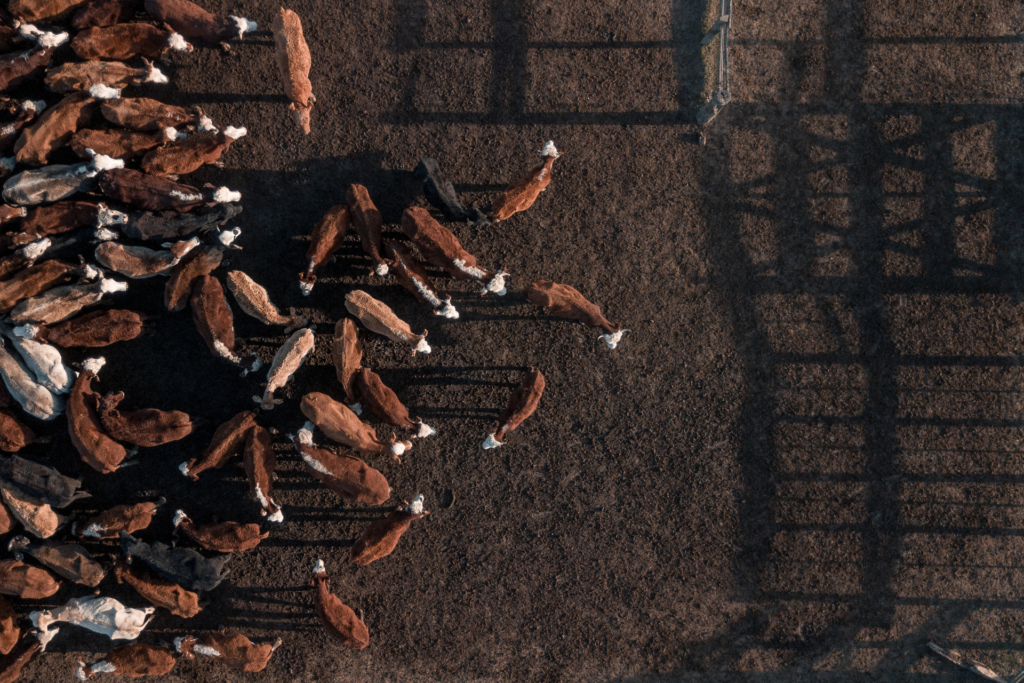
2. Improved Feed Conversion & Reduced Wastage
Providing an undercover, low-stress environment for cattle that keeps them cool both improves feed conversion and reduces feed wastage.
This is because the cattle’s energy is channeled into growth helping to reach target weights quicker – rather than expending energy trying to moderate body temperature.
Feed wastage is also significantly reduced simply because the feed bunks are undercover and out of the weather.
3. Increased Stocking Density & Cattle Numbers (Without Increasing Feedlot Footprint)
Feedlot sheds allow a higher stocking rate than partially shaded or unshaded pens.
This is because stocking density in open feedlots is typically around 15m2/SCU, but when undercover this can be reduced to 9m2/SCU (QLD) or around 6m2/SCU in some other states.
This can be beneficial if you are looking to make the best use of your existing feedlot set up or if you are wanting to increase finished cattle numbers without a major expansion.
Try out the calculators below to work out what size feedlot sheds you require, based on your chosen stocking density and bunk space
Pen Area Size Calculator
Use this calculator to determine the ideal width and length of a pen based on your chosen head count, desired bunk space and stocking density.
Bunk Space & Density Calculator
Already have existing pens? Use this calculator to determine how many cattle it can hold and it’s impact on density and bunk space.
4. Less Dirty Hide Penalties & Labour Costs
Finishing cattle in housing systems keeps hides cleaner, helping to decrease dirty hide penalties and reducing the labor cost of cleaning hides. Win-win!
5. Improved Carcase Quality
The environment the cattle are in is reflected in the carcase quality – cool and calm cattle produce a higher quality end product.
Providing cattle with a consistent, low-stress environment will help ensure a consistently high-quality carcase by reducing dark cutters and increasing weight gain as mentioned earlier.
6. Long Lasting Assets With Low Maintenance
Structural steel feedlot sheds are arguably the longest lasting shade option available, with a life-span of more than 25 years.
Feedlot sheds only require minimal maintenance in comparison to shade cloth, too.
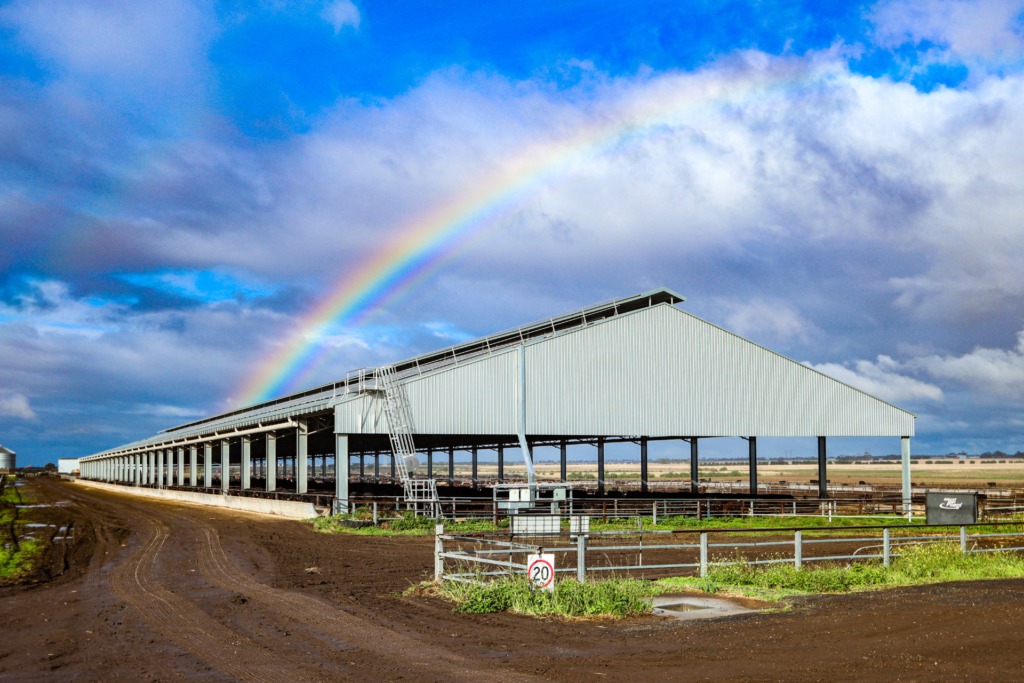
The longevity of our feedlot sheds are guaranteed with:
- Australian-made steel
- Hot dip galvanised, heavy duty UB columns and Open Web trusses.
- Australian-made cladding
We also recommend forming up the column footings to keep the column and footing out of the corrosive bedding. This has the added benefit of preventing injury to the cattle by eliminating sharp edges.
You can learn more about the hot dip galvanizing process and why every Action shed is fully hot dip galvanized in the video below.
7. Better Bedding Management
Implementing a covered housing system is an excellent time to review bedding management and take advantage of the opportunities to repurpose this.
For example, it could be used for fertiliser in the feedlot’s cropping program, or it could be composted and sold as another value stream.
8. Unique Sustainability Opportunities
“By the time you factor in water, fertiliser, social license and performance, there’s big returns to us for the investment we’re putting into sheds and it’s definitely going to be the way we’re going in the future.” – David Gillett
Along with the opportunity to repurpose bedding as fertiliser or compost, a feedlot shed can assist with a number of sustainable practices.
This includes capturing stormwater run-off, installing solar panels and as mentioned earlier, reducing feed wastage and resources spent on maintenance and hide cleaning.
In other words, feedlot sheds allow you to maximise your output while minimising your impact.
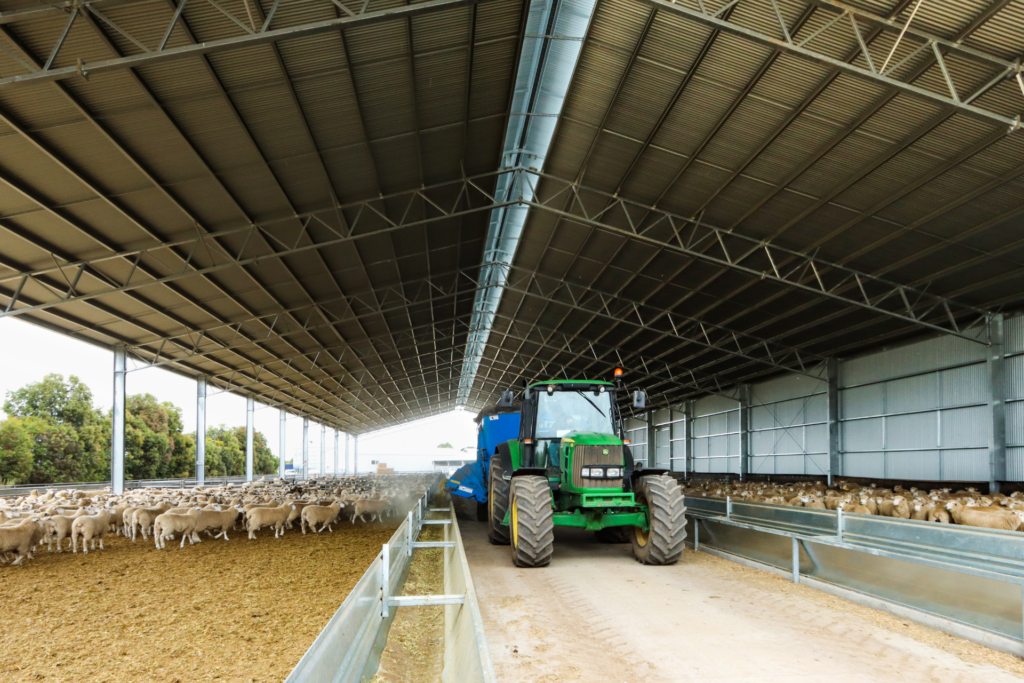
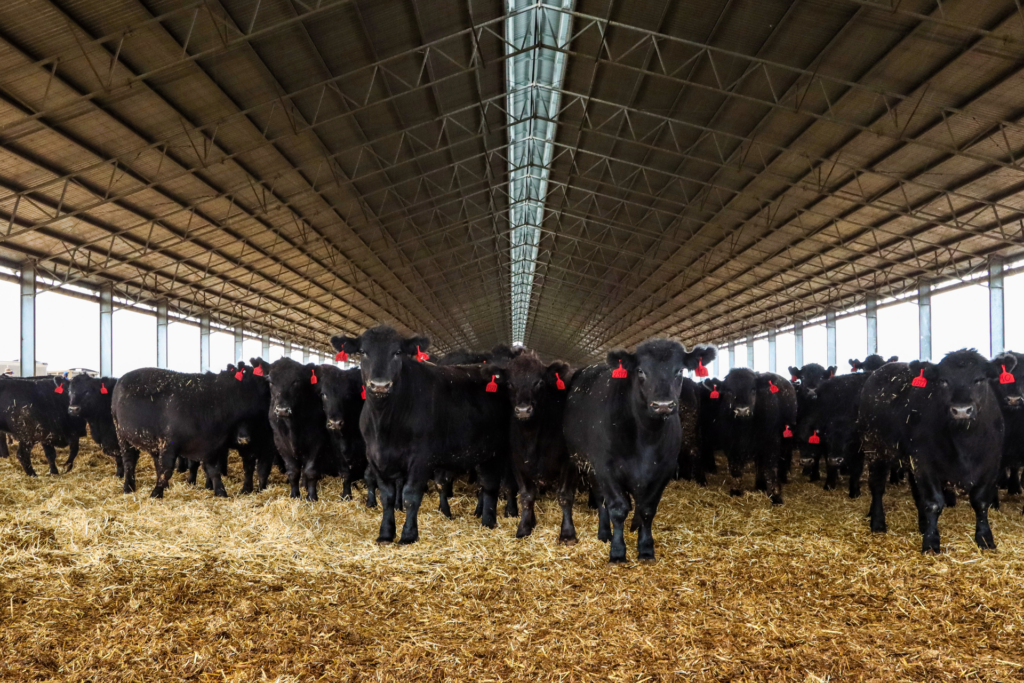
That’s an overview of some of the benefits of feedlot sheds!
Next up we discuss feedlot shed pricing which is an important consideration when weighing up the benefits of feedlot sheds.
How Much Does A Feedlot Shed Cost?
Cost is an important consideration for any construction project and it is important to consider this along with the benefits.
So here are some handy price guides to help you with your initial budgeting.
- Using the MLA Feedlot Covered Housing Systems Guide examples, the cost per SCU equates to ~$1,230/SCU for an uncovered feedlot and ~$2,060/SCU for a covered housing system.
These examples include the complete costs of works such as feed bunks and aprons, drainage and solid waste storage.
It is important to remember that costs are very site and design-specific and material and labour costs vary considerably between regions and over time.
- Our cost estimate for the feedlot shed construction is around $1400/SCU when stocked at 9m2 (supplied and erected).
We have also developed a price guide to help you establish your budget – How Much Does It Cost To Build A Feedlot Cover?
OUR COMMITMENT TO THE FEEDLOT INDUSTRY
We understand feedlot shade implementation, particularly covered housing systems, is a significant undertaking and making these types of business decisions requires tangible facts and data.
This is why we have invested in developing a holistic project approach and methodology that uses research including Computational Fluid Dynamics studies to provide feedlot-specific advice.
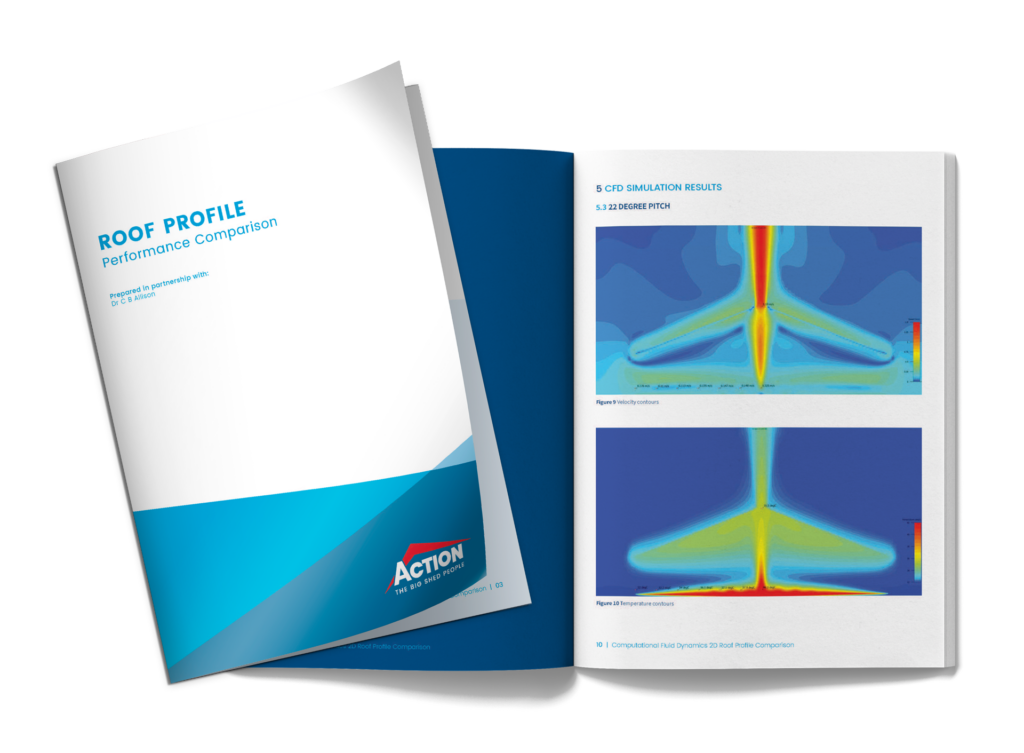
This advice addresses how to achieve effective airflow with the roof design to reduce heat, moisture and ammonia build-up, functional and cost-effective configurations and best-fit orientation depending on feedlot location and climate.
We are passionate about being a part of the successful implementation of shade in Australian feedlots and we believe in our distinct project methodology.
Additional Resources
- MLA Feedlot Covered Housing Systems Guide
- Curved Roof Versus Straight Roof
- How Much Does It Cost To Build A Commodity Storage Shed
- Partial Shade Versus Feedlot Sheds
- What Is The Best Roof Pitch For A Farm Shed?
We hope this discussion around 8 of the benefits of feedlot sheds has provided some food for thought!

